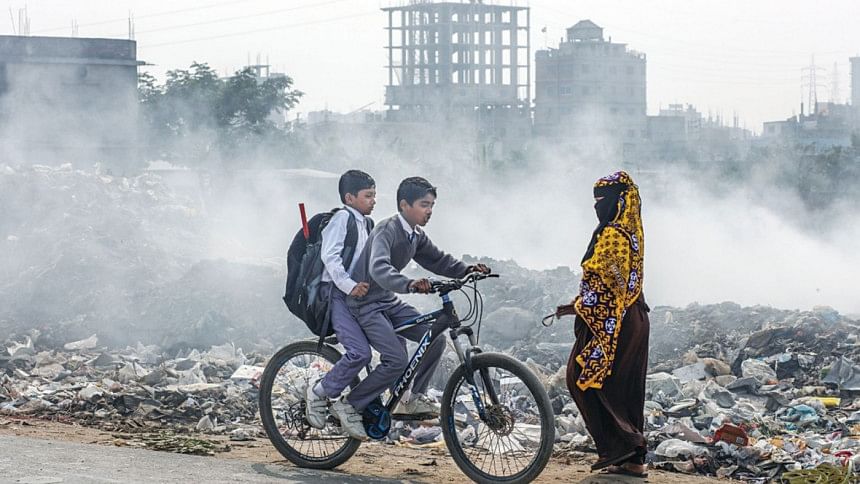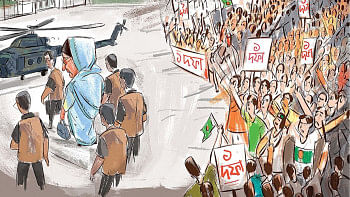Air Quality Index: Dhaka world’s second most polluted city

The densely populated capital of Bangladesh continues to rank high in the list of cities with the worst air quality.
Yesterday, Dhaka was second in the list. Delhi in neighbouring India was first, while third and fourth spots were grabbed by Lahore in Pakistan and Beijing in China, respectively.
Dhaka's air quality index (AQI) at 9am read 312, which is considered "hazardous".
An AQI between 201 and 300 is considered "poor", while 301-400 is hazardous, posing serious health risks to city residents.
AQI, an index for reporting daily air quality, is used by government agencies to inform people how clean or polluted the air of a certain city is, and what associated health effects might be a concern for them.
In Bangladesh, the overall air quality index is based on five criteria of pollutants: particulate matter (PM10 and PM2.5), nitrogen dioxide (NO2), carbon monoxide (CO), sulphur dioxide (SO2) and ozone (O3).
Bangladesh has a subtropical monsoon climate characterised by wide seasonal variations in rainfall, high temperatures and humidity. Generally, Dhaka's air starts getting fresh when monsoon rains begin in mid-June.
The air remains mostly acceptable from June to October.
In February last year, Bangladesh's Environment, Forests and Climate Change Minister Md Shahab Uddin admitted that air pollution levels in the capital "has reached an extreme level".
"This is mainly due to uncontrolled discharge of dust from construction projects, and smoke from vehicles and brick kilns," he told the news agency.
"Brick kilns are responsible for 58 percent air pollution in the capital. Plans have been taken to shut [traditional] kilns currently in operation," he added.
We are planning to stop burning bricks at all kilns by 2025 and use block bricks to construct buildings under government projects," the minister said.
Besides, on January 31, the High Court (HC) directed authorities concerned to shut down all illegal brick kilns by February 18.

 For all latest news, follow The Daily Star's Google News channel.
For all latest news, follow The Daily Star's Google News channel. 



Comments